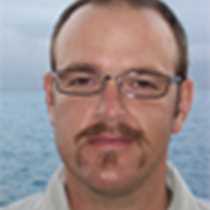Isabela and Fernandina Islands
Our largest island, Isabela loomed over us as we navigated along the northernmost coast this morning. During an early morning wildlife search we spotted the Galápagos petrel, which has recuperated from the destruction of invasive species over the past twenty years. Bryde’s whales surprised us as we headed for the Equator; a mother and her calf were busy feeding and indifferent to our presence.
As we closed in on the Equator, we were able to see the inside caldera of Ecuador volcano. This volcano lost over half of its rim due to a past collapse allowing a rare view of the inside caldera from our ship. Zodiac rides ensued permitting a close up view of the coast and the various species to be found. Pacific green sea turtles were encountered by the dozens as we entered into a shallow cove, some popping their heads above the surface for a short breath. A group of Galápagos penguins crossed our path as they tried to corral small baitfish into a manageable space. A male flightless cormorant exited the water with a large amount of seaweed bound for the nesting area that his mate decided upon. Returning to the same area that we used for our Zodiac ride, we entered the water for snorkeling. The temperature at 70 degrees was cold, however we all accustomed quickly as we were thrilled to find many sea turtles around us. A flightless cormorant takes a deep dive using only its webbed feet for propulsion. We truly enjoyed a remarkable morning in this drastically volcanic terrain.
Whales greeted us close to our afternoon site, Fernandina Island. Espinoza Point is the only visitor site on this large new island. The National Park Service wants to keep this site from invasive introduced species, and we are lucky to be able to visit this pristine area. Upon landing we observe the procession of hundreds of very large marine iguanas returning from their afternoon oceanic foraging. With such raw and hard terrain we are surprised to find so much life. Sea lions with their pups nursing and an occasional marine iguana sneezing out its excess salt make for an interesting orchestra of sights and sounds. As our sun drops to the horizon we find whales bones that have been bleached in the sun reminding us of the constant connection of sea and land. Fernandina Island gives us a proper view of the start and development of life on Earth.




